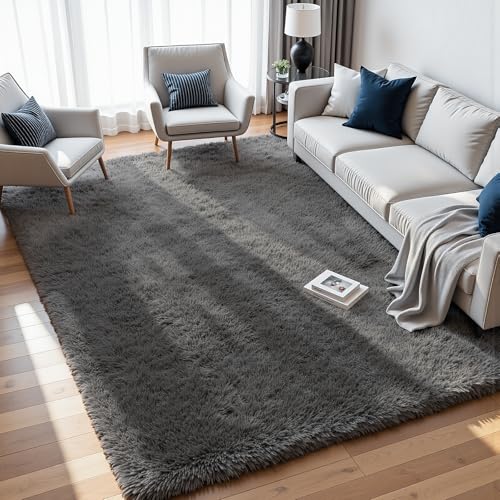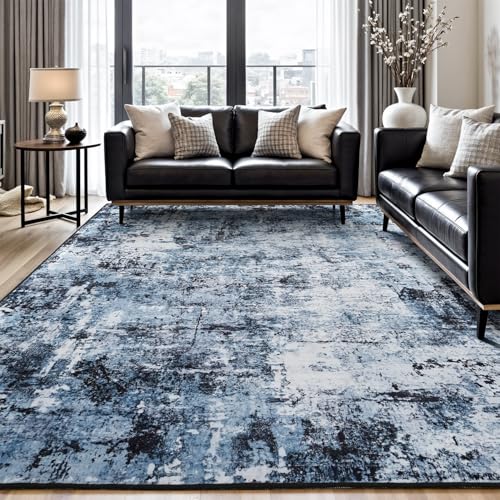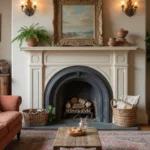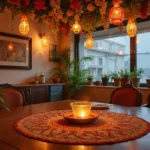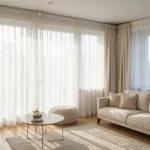Your porch deserves more than just basic safety features – it’s an opportunity to make a stunning first impression. Porch railings serve as both functional barriers and striking design elements that can transform your home’s curb appeal in ways you’ve never imagined.
We’ve discovered that the right railing design doesn’t just keep your family safe; it becomes the focal point that ties your entire exterior aesthetic together. Whether you’re drawn to sleek modern lines, rustic farmhouse charm, or timeless traditional elegance, there’s a railing style that’ll perfectly complement your home’s architecture.
From budget-friendly DIY options to luxury custom installations, we’ll explore creative answers that work for every skill level and budget. You’ll find inspiration for materials ranging from classic wood and wrought iron to contemporary cable systems and composite alternatives that require minimal maintenance while delivering maximum impact.
Classic Wooden Porch Railing Ideas for Timeless Appeal
Wooden porch railings remain the gold standard for homeowners seeking enduring beauty and versatility. We’ve found that wood offers unmatched customization potential while maintaining the classic charm that never goes out of style.
Traditional Spindle Designs
Spindle railings create elegant vertical lines that complement Victorian and Colonial architecture perfectly. We recommend spacing spindles 4 to 6 inches apart to meet most building codes while maintaining visual appeal. Classic turned spindles feature decorative curves and bulbous sections that add sophisticated detail to any porch.
Square spindles offer a more streamlined approach for contemporary traditional homes. These clean lines work exceptionally well with Craftsman and Prairie style architecture. We suggest using 2×2 inch cedar or pressure treated pine for durability and cost effectiveness.
Beveled spindles provide subtle geometric interest without overwhelming the overall design. The angled edges catch light beautifully throughout the day, creating ever-changing shadows that enhance the porch’s visual depth. Installing these at 5 inch intervals typically provides the best balance of safety and aesthetics.
Rustic Log Railing Options
Log railings transform porches into cabin style retreats that celebrate natural wood beauty. We’ve seen stunning results using 6 to 8 inch diameter logs for top rails combined with smaller 4 inch branches as balusters. Cedar logs resist decay naturally and develop an attractive silver gray patina over time.
Peeled log designs showcase the wood’s natural grain patterns and organic textures. Fresh peeled aspen or pine creates bright, clean surfaces that highlight the wood’s inherent character. These railings work particularly well on ranch style homes and mountain properties.
Split rail configurations offer budget friendly rustic appeal with minimal maintenance requirements. Using locally sourced timber reduces costs significantly while supporting regional suppliers. We recommend treating split rails with clear wood preservative to extend their lifespan to 15 to 20 years.
Painted Wood Finishes
White painted railings deliver crisp, clean lines that enhance any architectural style. We’ve found that semi gloss paint provides the best durability against weather while maintaining easy cleanup. Quality exterior acrylic latex paint typically lasts 5 to 7 years before requiring touch ups.
Bold color choices transform wooden railings into striking design statements. Deep blues, forest greens, and charcoal grays create dramatic contrast against neutral siding colors. Using high quality primer ensures paint adhesion and prevents tannin bleeding from cedar or redwood.
Two tone painting techniques add visual interest while highlighting architectural details. We suggest painting spindles in accent colors while keeping top and bottom rails neutral. This approach draws attention to craftsmanship details without overwhelming the overall porch design.
Modern Metal Porch Railing Ideas for Contemporary Homes
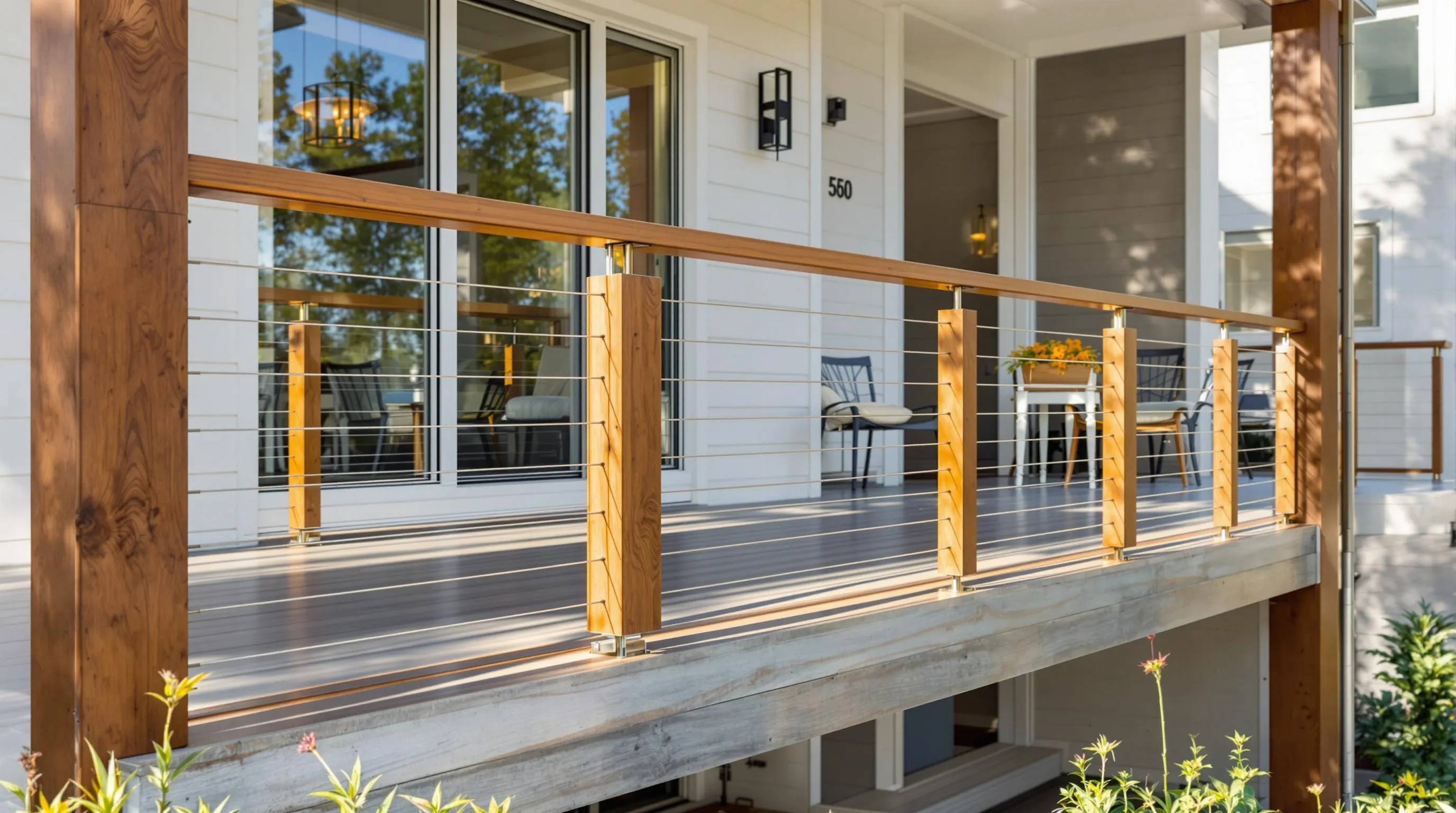
Moving beyond traditional wooden designs, we explore how metal railings can transform your porch with contemporary elegance. These modern answers combine durability with sophisticated aesthetics to create stunning focal points for today’s homes.
Sleek Steel Cable Systems
Steel cable railings deliver an unobstructed view while maintaining essential safety features. We love how thin cables replace traditional balusters to create a minimalist aesthetic that perfectly complements contemporary architecture. This design approach offers exceptional durability with minimal maintenance requirements.
Installation becomes surprisingly straightforward with modern cable systems. The sleek appearance works particularly well on decks and porches where you want to preserve scenic views. Cable railings resist weathering and corrosion while providing the strength needed for safety compliance.
Design versatility allows cable systems to work with various post materials. You can pair steel cables with wooden posts for warmth or metal posts for a fully industrial look. The thin profile creates visual lightness that makes small porches appear more spacious.
Aluminum Panel Designs
Aluminum panels combine lightweight construction with exceptional corrosion resistance. We recommend these designs for homeowners seeking low maintenance options that won’t sacrifice style. The material’s natural properties make it ideal for various weather conditions without requiring frequent upkeep.
Flat panel configurations offer clean lines that emphasize modern architectural elements. Decorative patterns within aluminum panels can add visual interest while maintaining the contemporary feel. These versatile designs integrate seamlessly with both horizontal and vertical design schemes.
Installation simplicity makes aluminum panels an attractive DIY option. The lightweight nature reduces structural requirements while the aesthetic appeal enhances your home’s curb appeal. Various finishes and colors allow customization to match your exact design vision.
Industrial Iron Balusters
Industrial style iron balusters create an edgy aesthetic with exposed metalwork details. We appreciate how this rugged approach brings character to contemporary porches through bold design statements. The highly customizable nature allows you to mix modern and traditional elements effectively.
Customization options include pairing iron balusters with different railing materials. This flexibility lets you create unique combinations that reflect your personal style preferences. The industrial look works especially well with urban and loft style homes.
Modern wrought iron focuses on clean geometric shapes like horizontal or vertical bars. These simple forms adapt easily to different porch layouts while maintaining the contemporary aesthetic. The customizable nature ensures your railing design perfectly fits your exact architectural requirements.
Creative Composite Porch Railing Ideas for Low Maintenance
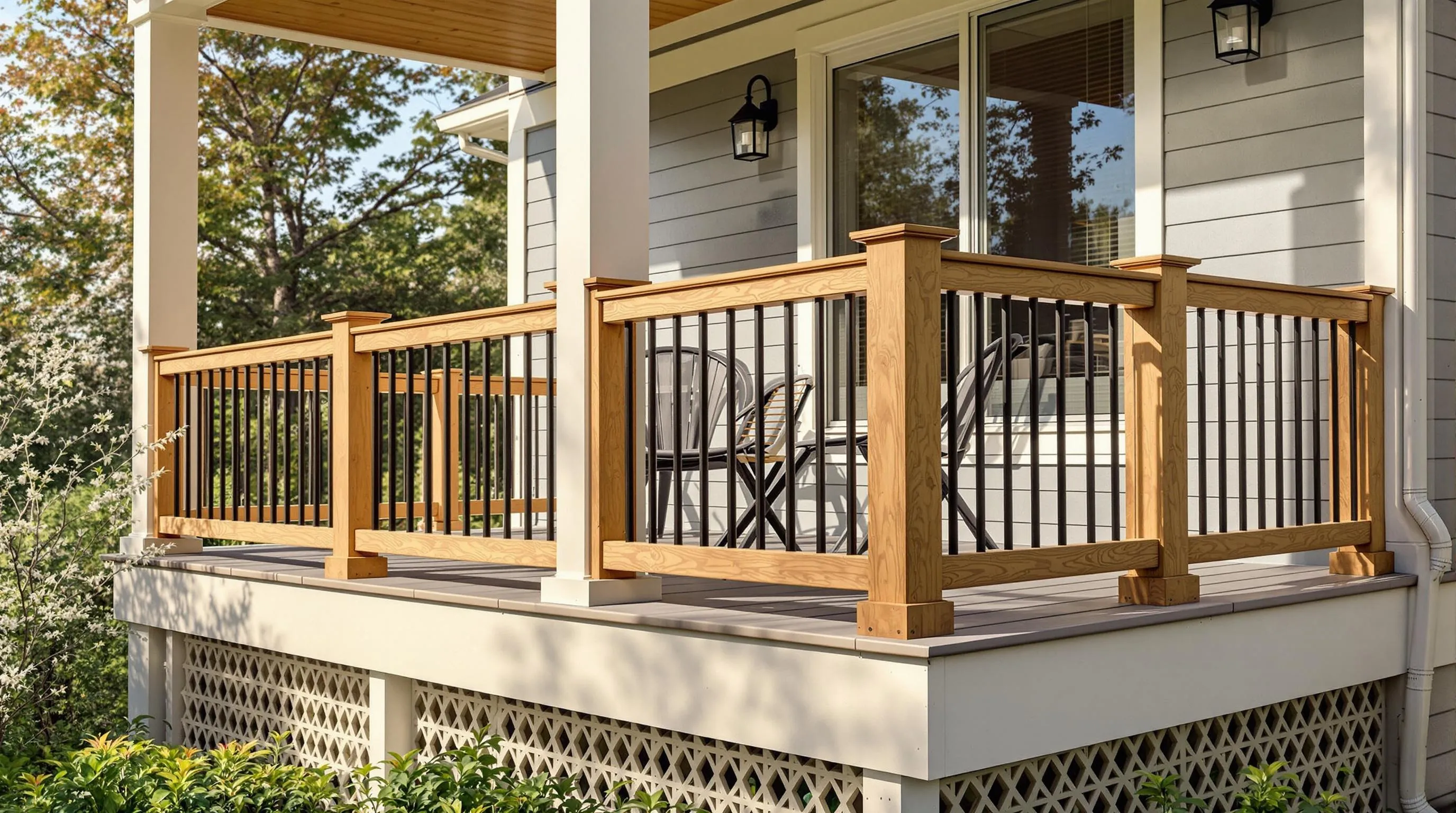
Composite railings bring together the best of both worlds, offering stunning aesthetics without the ongoing maintenance demands of traditional materials. We’ve found these innovative options particularly effective for homeowners seeking beauty and practicality.
Wood-Grain Composite Materials
Wood-grain composite railings deliver the warm appearance of natural wood while eliminating maintenance headaches. These innovative materials combine recycled wood fibers with durable plastics to create surfaces that resist rot, warping, splintering, and fading. We appreciate how manufacturers replicate authentic wood textures, providing the classic charm homeowners love without constant staining or sealing requirements.
Durability becomes the standout feature of these composite systems. Unlike traditional wood that requires annual maintenance, wood-grain composites maintain their appearance for years with simple soap and water cleaning. Weather resistance makes them ideal for porches exposed to harsh conditions, while the realistic wood patterns satisfy those who prefer natural aesthetics over synthetic appearances.
Mixed Composite and Metal Combinations
Composite and metal hybrid railings create striking modern designs while maintaining practical benefits. Trex’s Signature Railing exemplifies this approach, featuring aluminum vertical balusters with cable-like horizontal elements paired with composite posts and rails. We’ve observed how these combinations deliver sleek aesthetics that complement contemporary home designs.
Metal balusters within composite frames offer superior view preservation. Powder-coated aluminum components resist corrosion while providing clean sight lines, making them perfect for scenic locations like waterfront properties. These hybrid systems combine composite’s low maintenance characteristics with metal’s structural strength and visual lightness.
Installation versatility sets mixed material systems apart from single-material options. Contractors can customize baluster spacing and post configurations to meet exact design requirements while maintaining building code compliance throughout the project.
Color-Coordinated Composite Systems
Color-coordinated composite railings ensure seamless integration with existing home features. Trex Select Railing offers clean white post sleeves and rails with contrasting black balusters, creating classic combinations that match white vinyl fencing or traditional exteriors. We recommend these coordinated systems for homeowners seeking cohesive outdoor design themes.
Wide color selections enable precise aesthetic matching across different outdoor elements. Manufacturers provide multiple finish options that coordinate with siding, trim, and other architectural features, allowing complete design customization. These systems eliminate the guesswork involved in matching paint colors or stain finishes over time.
Consistent coloring throughout the material prevents the fading and discoloration common with painted surfaces. Unlike traditional materials that require periodic repainting, composite systems maintain their original appearance through advanced color-through manufacturing processes that integrate pigments throughout the entire material structure.
Decorative Glass Porch Railing Ideas for Open Views

Glass railings represent the pinnacle of modern porch design, offering unparalleled views while maintaining essential safety standards. These sophisticated systems transform outdoor spaces into elegant extensions of your home’s interior.
Tempered Glass Panels
Durability defines tempered glass as the premier choice for porch railing installations. This safety glass withstands important impact and shatters into small, harmless pieces if broken, making it ideal for outdoor environments where weather and activity demand resilience.
Unobstructed sightlines become the hallmark of clear tempered glass panels, creating seamless barriers that preserve scenic views of waterfronts, gardens, and landscapes. Minimalist metal or wood support structures complement these installations by virtually disappearing from view, producing a “floating” glass effect that enhances contemporary porch aesthetics.
LED integration transforms functional railings into illuminated design features through etched panels showcasing artistic or natural motifs. These lighting systems add both evening ambiance and decorative appeal to your outdoor space.
Frosted Glass Privacy Options
Subtle privacy emerges through frosted or textured glass panels that diffuse light while obscuring direct visibility. This solution balances seclusion needs with natural light preservation, particularly valuable for urban porches or closely spaced homes where traditional barriers might create unwanted darkness.
Textured surfaces offer design flexibility through etched patterns, partial frosting, or decorative textures that maintain some transparency while adding privacy layers. These accent panels work effectively within predominantly clear glass railing systems to create visual interest and functional screening.
Strategic placement of frosted elements allows customization of privacy levels throughout your porch, enabling open views in scenic directions while maintaining discretion where needed.
Colored Glass Accent Features
Visual interest multiplies through colored or tinted glass panels that serve as artistic focal points within your railing design. These elements complement your home’s exterior color palette or create bold contrasts that reflect personal style preferences.
Stained glass balusters in Tiffany styles combine beautifully with wood rails to achieve craftsman or vintage aesthetics that contrast elegantly with modern clear panels. Custom etching and patterning on colored glass add texture and depth while adapting to architectural themes ranging from contemporary to rustic craftsman.
Customization possibilities expand through various color combinations, opacity levels, and decorative techniques that allow your porch railing to become a true expression of your design vision.
Budget-Friendly DIY Porch Railing Ideas
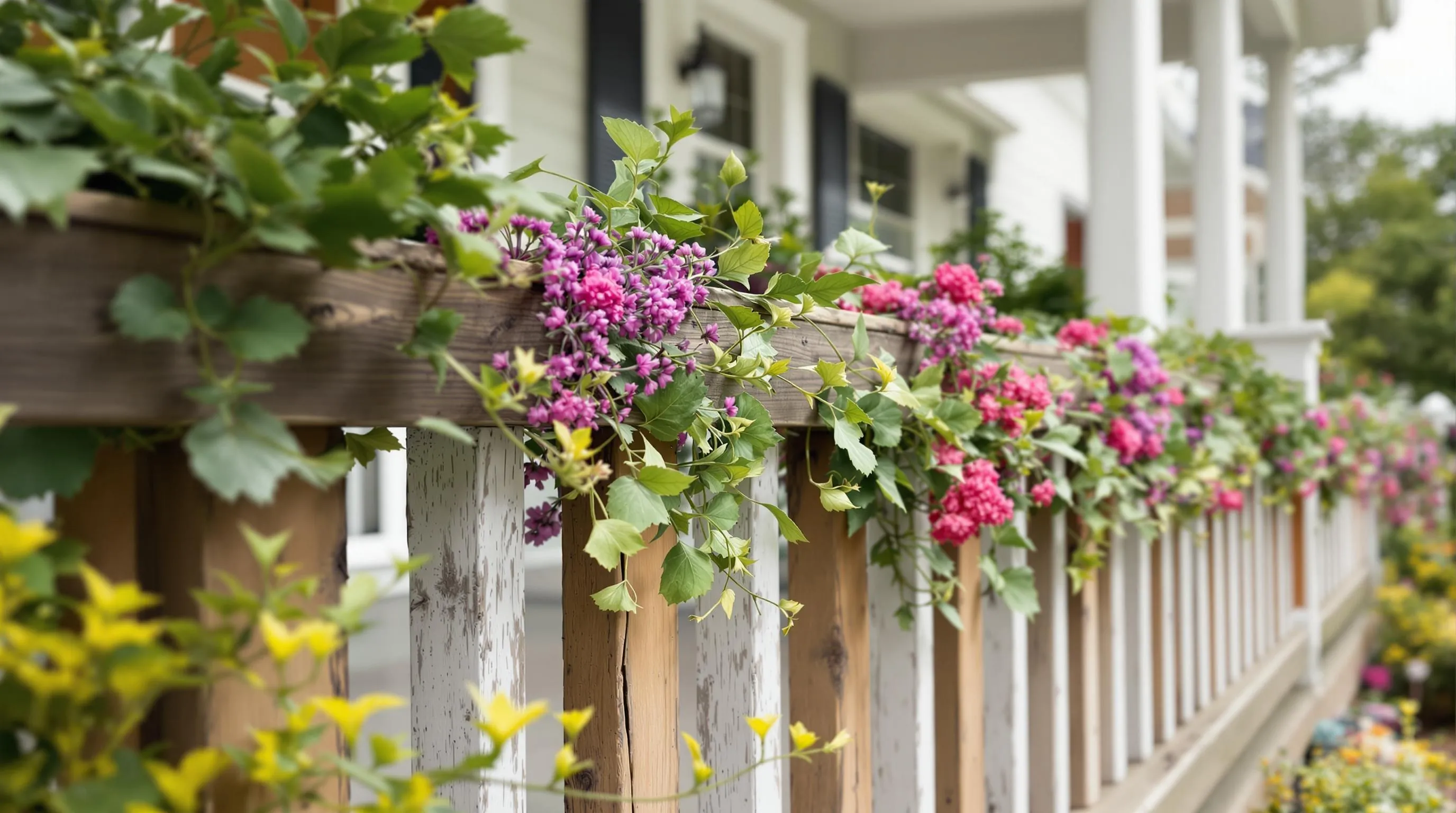
Creating beautiful porch railings doesn’t require a massive budget when you know how to work with affordable materials and simple techniques. We’ll explore cost-effective answers that deliver impressive results without compromising on safety or style.
Repurposed Material Projects
Landscaping timber rails offer an excellent starting point for budget-conscious homeowners looking to create rugged and secure railings. These materials cost significantly less than traditional lumber and are readily available in garden sections of most home improvement stores. Securing them properly requires timber locks and shims to ensure consistent spacing throughout your project.
Steel conduit rails provide a modern wire-like aesthetic without the premium price tag of traditional steel wire systems. This DIY approach delivers a sleek contemporary look while remaining surprisingly easy to install. Most homeowners can complete this project using basic tools and minimal experience with metal construction.
Reclaimed wood elements transform discarded materials into stunning railing features with character and history. Salvaged barn wood, old deck boards, or weathered fence pickets can be cleaned, treated, and repurposed into unique balusters or top rails. These materials often cost a fraction of new lumber while adding distinctive charm to your porch design.
Simple PVC Pipe Constructions
Basic PVC framework creates surprisingly durable railing structures that resist weathering and require minimal maintenance over time. While not traditionally associated with porch railings, PVC pipes offer excellent flexibility for creative designs and curved sections. Their lightweight nature makes installation manageable for most DIY enthusiasts without requiring heavy equipment.
Decorative PVC components can be combined with standard pipes to create more sophisticated appearances that mimic traditional materials. Specialized fittings, caps, and connectors allow you to build complex designs while maintaining the cost advantages of plastic construction. These systems work particularly well for temporary installations or rental properties where permanent answers aren’t practical.
Painted PVC systems can be customized to match your home’s exterior color scheme while maintaining their weather-resistant properties. Quality exterior paint adheres well to properly prepared PVC surfaces and provides years of attractive service. This approach allows you to achieve the look of painted wood railings at a fraction of the cost and maintenance requirements.
Basic Wood Frame Designs
Pressure treated wood rails represent one of the most affordable and reliable options for DIY porch railing projects. This material resists rot and insect damage naturally, making it ideal for outdoor applications where longevity matters. Most lumber yards stock pressure treated materials in standard railing dimensions, simplifying your planning and construction process.
2×4 lumber constructions provide sturdy and straightforward building answers that work well for homeowners with basic carpentry skills. These dimensional lumber pieces are readily available, consistently sized, and easy to work with using standard tools. Building with 2x4s allows you to create simple yet effective railing designs that meet most building code requirements.
Cedar board combinations offer natural beauty and weather resistance while remaining within reasonable budget constraints for most projects. Cedar’s natural oils repel insects and resist decay, reducing the need for chemical treatments or frequent maintenance. This wood species works particularly well for horizontal rail designs where its grain patterns can be showcased effectively.
Unique Creative Porch Railing Ideas for Custom Style
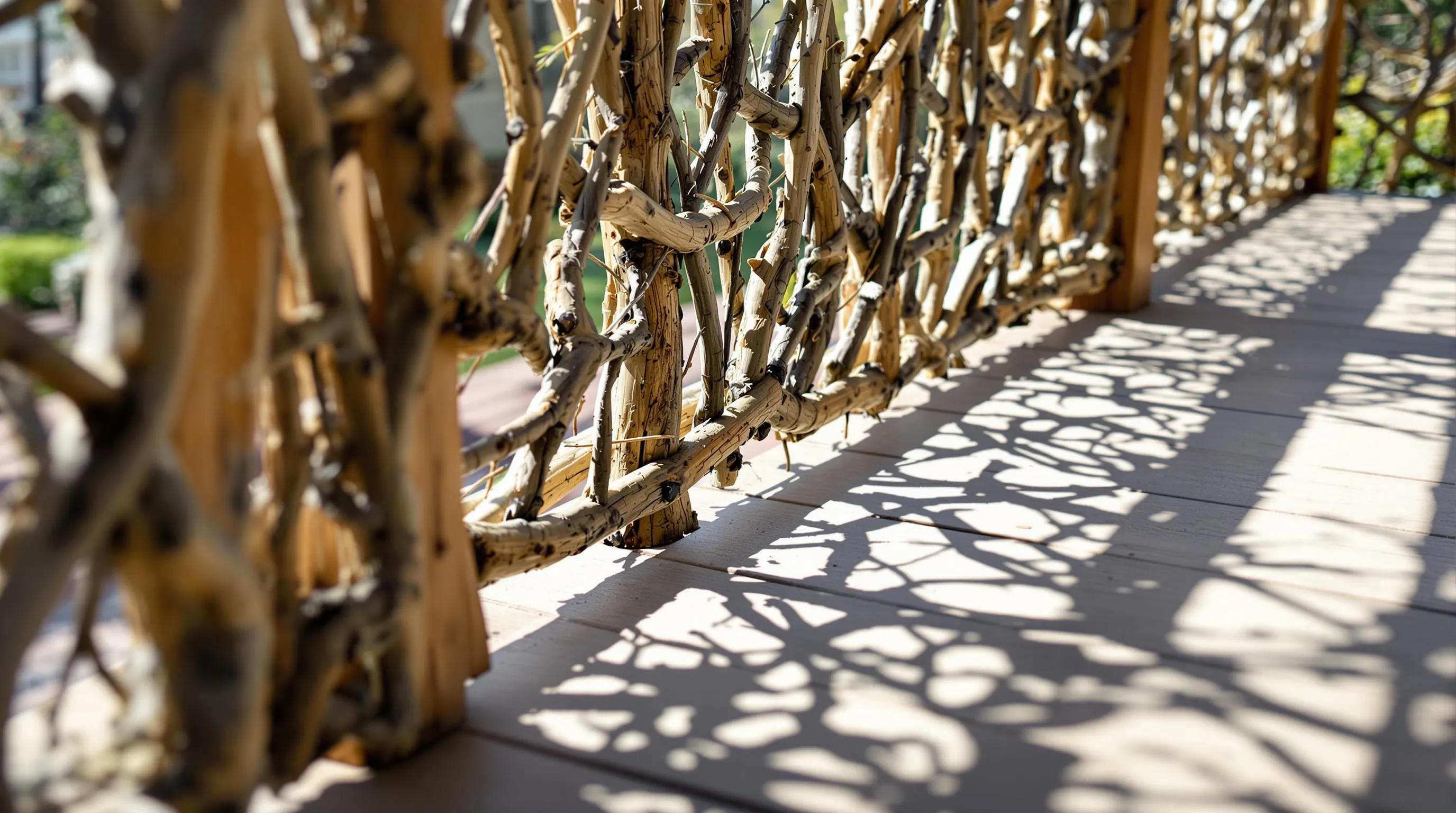
Moving beyond traditional materials, we’ll explore distinctive railing designs that transform ordinary porches into personalized outdoor retreats. These innovative approaches blend functionality with artistic expression to create truly one-of-a-kind features.
Branch and Twig Natural Elements
Branch railings bring nature’s organic beauty directly to your porch design. We recommend using sturdy materials like oak branches or birch twigs arranged between traditional posts to create rustic barriers that feel authentically handcrafted. Natural elements provide irregular shapes and textures that make each installation completely unique.
Incorporating these materials means embracing nature’s imperfections while maintaining structural integrity. We suggest combining branches with conventional wooden posts to ensure building code compliance while preserving the organic aesthetic. Seasonal weathering enhances the natural appearance over time, creating a living artwork that evolves with your outdoor environment.
Decorative Cutout Patterns
Cutout railings transform functional barriers into artistic focal points through intricate pattern work. We create these designs by cutting geometric shapes, floral motifs, or custom themes into wood or metal panels that serve as both safety features and decorative elements. Pattern openings must remain smaller than 4 inches in diameter to meet safety requirements while allowing creative expression.
Shadow play becomes an additional design element as sunlight filters through cutout patterns throughout the day. We recommend coordinating pattern themes with your home’s architectural style, whether that’s Victorian scrollwork, modern geometric designs, or nature-inspired motifs. Custom cutouts allow homeowners to incorporate personal symbols or family crests into their porch design.
Rope and Nautical Themes
Rope railings create coastal elegance through maritime-inspired design elements that suit waterfront properties perfectly. We typically string thick natural or synthetic ropes between wooden posts or authentic boat cleats to achieve a relaxed yet sophisticated nautical appearance. These installations work particularly well for beach houses and lakefront homes.
Maritime hardware enhances the authentic feel through elements like oars, dock cleats, and marine-grade metals integrated into the railing system. We often combine rope sections with traditional posts to maintain structural stability while preserving the oceanic aesthetic. Weathered wood posts paired with rope create a driftwood effect that strengthens the coastal theme throughout your porch design.
Safety-Focused Porch Railing Ideas for Family Homes
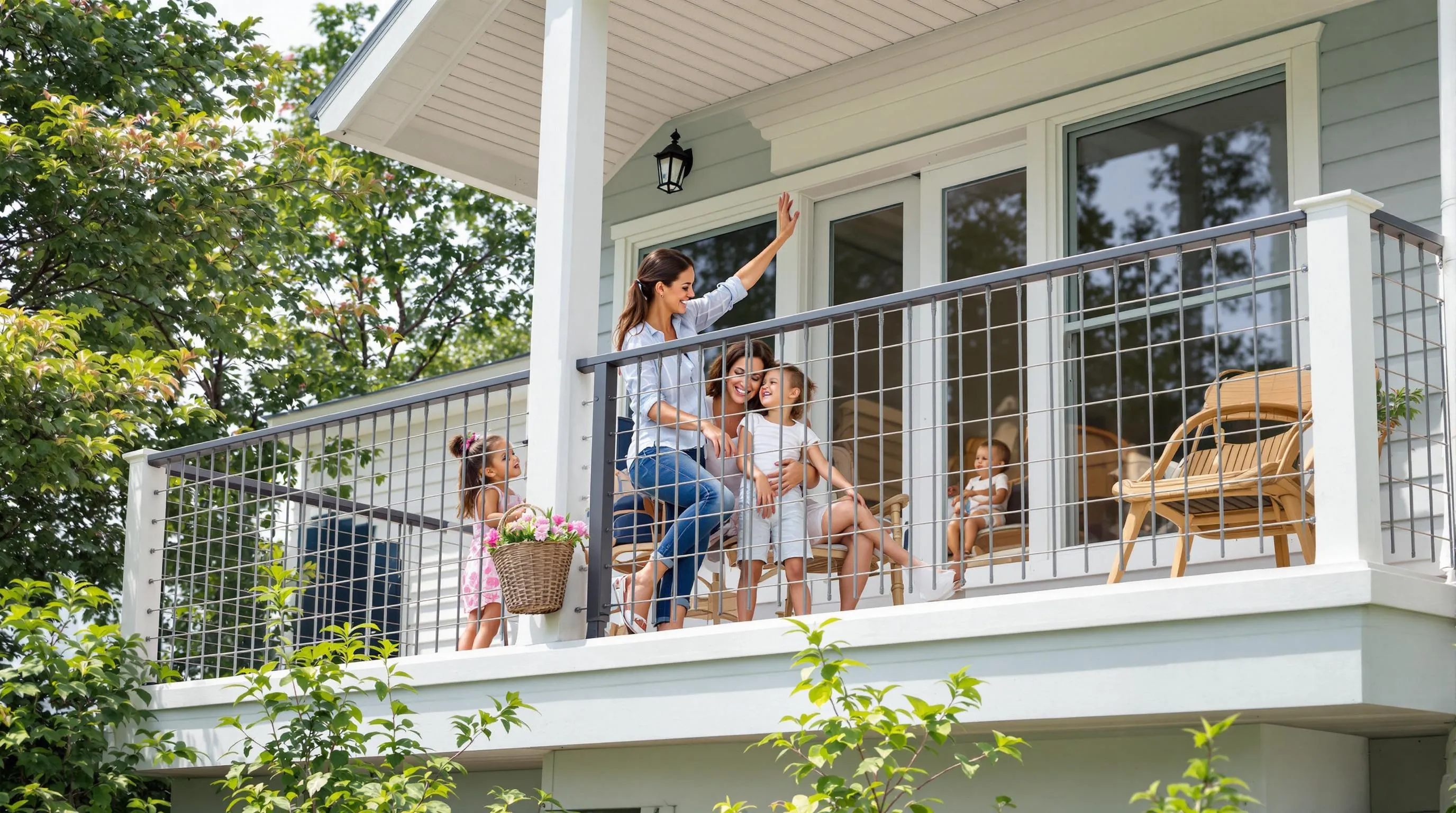
When children become part of our daily outdoor activities, porch railing safety transforms from a consideration into an absolute necessity. We’ll explore exact design strategies that protect families while maintaining the aesthetic appeal we’ve discussed throughout our railing journey.
Child-Safe Height Requirements
Building codes establish clear standards for porch railing heights to ensure family safety. Most areas following the 2018 International Residential Code require guard railings between 36 to 42 inches on porches elevated more than 30 inches from ground level.
Local regulations often exceed these minimum requirements, so we recommend verifying exact codes in your area before installation. Compliance isn’t just about avoiding fines—proper height requirements prevent falls and create genuine protection for children exploring outdoor spaces.
Measuring accuracy becomes critical when installing family-safe railings. We measure from the deck surface to the top of the railing, ensuring consistent height across the entire perimeter for maximum protection.
Anti-Climb Design Features
Traditional horizontal rails create climbing opportunities that we want to eliminate in family-focused designs. Children naturally view horizontal elements as ladder rungs, making these conventional styles less suitable for homes with young family members.
Vertical cable railings offer superior safety by removing climbing footholds while maintaining clean aesthetics. We recommend 316 marine grade stainless steel cables for their durability and minimal maintenance requirements.
Baluster spacing regulations require gaps no larger than 4 inches to prevent children from squeezing through openings. This “sphere test” ensures that a 4-inch ball cannot pass between vertical elements, creating effective barriers without compromising visibility.
Closely spaced vertical elements discourage climbing while providing the security families need. We favor designs that eliminate horizontal elements between posts, focusing on vertical patterns that deter adventurous children.
Sturdy Handrail Integration
Continuous handrails provide essential support for family members of all ages handling porch stairs and elevated areas. We ensure handrails connect securely at both ends with intermediate support points as structural requirements demand.
Dual handrail systems accommodate different heights by incorporating bottom rails that serve as secondary supports for children. This approach creates multiple contact points for stability while maintaining code compliance.
Weather-resistant materials guarantee longevity in our handrail selections, including treated wood, metal, and composite options that withstand seasonal changes. We prioritize materials that maintain structural integrity through regular use by active families.
Regular inspection schedules ensure ongoing safety for family-focused railing systems. We recommend quarterly checks of all connection points, handrail stability, and overall structural condition to maintain protection standards.
| Safety Feature | Specification | Family Benefit |
|---|---|---|
| Railing Height | 36-42 inches | Prevents falls for all ages |
| Baluster Spacing | ≤4 inches apart | Blocks child access through gaps |
| Handrail Integration | Continuous, secure attachment | Provides stability and support |
| Material Selection | Marine grade steel, treated wood | Ensures durability and low maintenance |
Weather-Resistant Porch Railing Ideas for Durability
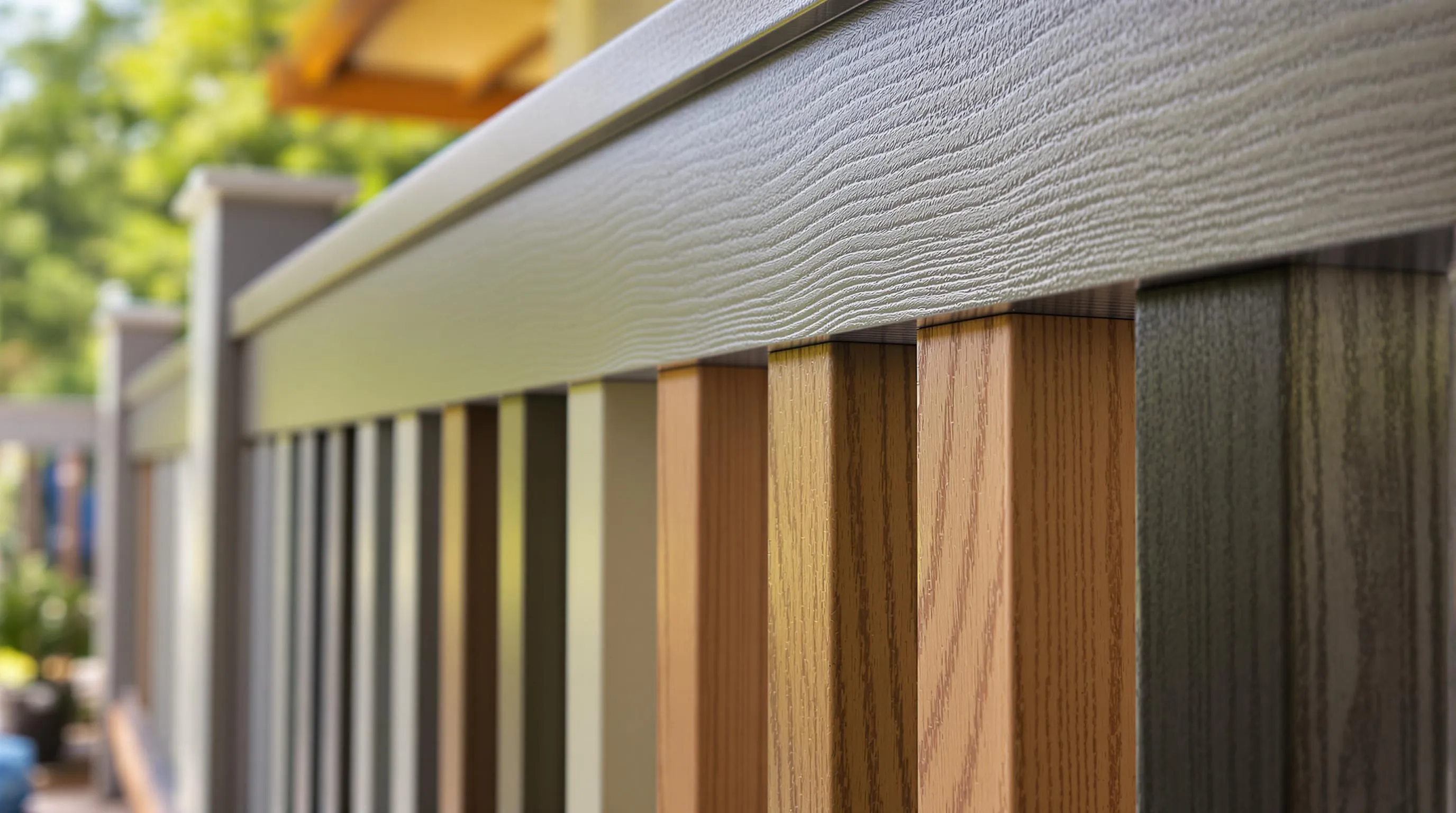
We understand that porch railings face constant exposure to harsh weather conditions, making durability a top priority for homeowners. Selecting materials that withstand the elements ensures long term value and reduces maintenance requirements over time.
Vinyl Maintenance-Free Options
Vinyl railings offer exceptional weather resistance without requiring regular upkeep like traditional wood alternatives. We recommend these systems for homeowners seeking budget friendly answers that replicate the classic wood appearance while eliminating painting, staining, or sealing requirements.
Weather conditions including rain, snow, UV rays, and temperature fluctuations won’t damage quality vinyl railing systems. These materials resist fading, cracking, and warping even after years of exposure to harsh outdoor elements.
Design versatility allows vinyl railings to complement various architectural styles from traditional colonial homes to contemporary structures. We’ve observed that manufacturers now offer multiple color options, textures, and decorative elements that enhance curb appeal while maintaining durability.
Installation simplicity makes vinyl railings attractive for DIY enthusiasts and professional contractors alike. Most systems feature snap together components that reduce labor costs and installation time compared to traditional materials.
Powder-Coated Metal Finishes
Powder coated metal railings provide superior weather resistance through advanced coating technology that bonds directly to the metal surface. We find these finishes particularly effective at preventing rust, corrosion, and weather damage that typically affects standard painted metal surfaces.
Durability testing shows powder coated finishes last significantly longer than traditional paint applications, maintaining their appearance for decades with minimal maintenance. These coatings resist chipping, scratching, and fading better than conventional finish options.
Modern aesthetics combine with practical benefits as powder coated metal railings offer sleek, contemporary appearances while delivering exceptional strength. We appreciate how these railings maintain their structural integrity even in extreme weather conditions including high winds and heavy precipitation.
Color stability remains consistent throughout the life of powder coated finishes, eliminating the need for frequent touch ups or complete refinishing projects. Many manufacturers offer warranties extending 15 to 25 years on their powder coated metal railing systems.
Treated Lumber Answers
Treated lumber provides natural wood beauty with enhanced protection against rot, insects, and moisture damage that typically affects untreated wood products. We recommend pressure treated options for homeowners who prefer traditional wood aesthetics with improved durability characteristics.
Chemical treatments penetrate deep into the wood fibers, creating barriers against termites, carpenter ants, and other wood destroying insects. These protective measures extend the lifespan of wooden railings significantly compared to standard lumber options.
Maintenance requirements for treated lumber remain minimal compared to untreated wood, though periodic sealing or staining helps maintain optimal appearance and protection levels. We suggest establishing regular inspection schedules to identify any maintenance needs early.
Cost effectiveness makes treated lumber an attractive middle ground between budget vinyl options and premium metal alternatives. Quality treated lumber offers decades of reliable service when properly maintained and installed according to manufacturer specifications.
| Material | Maintenance Level | Weather Resistance | Lifespan | Cost Range |
|---|---|---|---|---|
| Vinyl | Minimal cleaning only | Excellent | 20-30 years | Budget friendly |
| Powder Coated Metal | Occasional washing | Superior | 25-40 years | Moderate to high |
| Treated Lumber | Periodic sealing | Good to excellent | 15-25 years | Moderate |
Conclusion
We’ve explored an incredible range of porch railing options that can transform your outdoor space into something truly special. Whether you’re drawn to classic wooden designs traditional charm or modern metal systems with their sleek aesthetics there’s a perfect solution waiting for your home.
Remember that the best porch railing combines your personal style preferences with practical considerations like safety requirements budget constraints and maintenance expectations. From budget-friendly DIY projects using repurposed materials to stunning glass panels with LED lighting the possibilities are truly endless.
Take time to evaluate your exact needs including weather resistance family safety and long-term durability. With the right choice your new porch railing will enhance your home’s curb appeal provide years of reliable service and create an outdoor space you’ll love spending time in.
Frequently Asked Questions
What materials are best for porch railings?
The best materials include wood (cedar, pressure-treated lumber), metal (aluminum, steel, wrought iron), composite materials, vinyl, and glass. Wood offers classic beauty but requires maintenance, while composite and vinyl provide low-maintenance alternatives. Metal railings offer durability and modern aesthetics, and glass provides unobstructed views with contemporary appeal.
How high should porch railings be for safety?
Most building codes require porch railings to be between 36 to 42 inches high for elevated porches. The exact height depends on your local building codes and the elevation of your porch. Always check with local authorities and measure accurately to ensure compliance and prevent falls.
Are composite porch railings worth the investment?
Yes, composite railings offer excellent value by combining the appearance of natural wood with superior durability. They resist rot, fading, and weather damage while requiring minimal maintenance. Though initially more expensive than wood, they save money long-term through reduced upkeep costs and longer lifespan.
What are the most budget-friendly porch railing options?
Budget-friendly options include basic wood frame designs using pressure-treated lumber, PVC pipe constructions, repurposed materials like landscaping timber, and simple steel conduit rails. DIY installation can significantly reduce costs, and painted finishes can enhance the appearance of affordable materials.
How do I make porch railings child-safe?
Ensure railings meet height requirements (36-42 inches), use anti-climb designs with vertical elements, space balusters no more than 4 inches apart, and avoid horizontal elements that encourage climbing. Choose sturdy materials, install secure handrails, and conduct regular safety inspections to maintain structural integrity.
What maintenance do different railing materials require?
Wood railings need annual staining or painting and regular inspections for rot. Metal railings require occasional cleaning and rust treatment. Composite and vinyl railings need only soap and water cleaning. Glass panels require regular cleaning for clarity. Proper maintenance extends lifespan and preserves appearance.
Can I install porch railings myself?
Yes, many railing systems are designed for DIY installation, especially basic wood frames, PVC constructions, and some composite systems. However, complex designs, glass panels, or structural modifications may require professional installation. Always follow manufacturer instructions and local building codes for safety.
How do cable railings compare to traditional spindle designs?
Cable railings offer unobstructed views, modern aesthetics, and easy maintenance. They’re ideal for contemporary homes and scenic locations. Traditional spindles provide classic appeal, easier DIY installation, and better privacy. Cable systems typically cost more initially but offer superior durability and minimal upkeep requirements.


